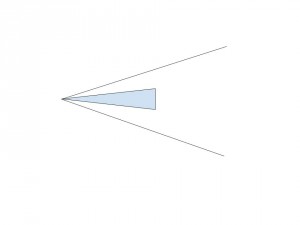A week ago, a student said something so sad in my Humanities English 10 class. We were about to choose parts for that day’s reading of Hansberry’s A Raisin in the Sun when a student mentioned how little time she had to finish an assignment, but that she needed to get it done for the grade.
(Distant siren goes off in my head.)
“But your real goal is to learn, right?” I asked.
“Mr. Hering, we do this for the grades.” This stopped me in my tracks. I could feel a crack forming in what I saw as the shared understanding of learning we had been co-constructing all year. As my confusion melted into sadness, a couple of other similar comments were uttered:
“Mr. Hering, parents don’t ask us what we learned, they ask how our grades are.”
“My parents say I have to get good grades to get into a good college so I can get a good job.”
….and then the saddest of all – “Mr. Hering, teachers give us enough time for grades, not enough time to learn.” I had to say it over in my head a few times to even make sense of it. My eyes welled up.
I looked out at their faces and saw pain, sorrow, frustration….and nodding of agreement, many heads nodding, eyes staring back at me. I couldn’t quite understand what was happening. They looked broken. To be fair, they were also three days away from their AP US History test, and had all been madly studying for many days, running on energy reserves they would otherwise save for a desert island.
But we had such wonderful experiences this year growing with the guest artists from the Wex PAGES program. We had explored art and literature, and then co-created projects that expanded our understanding of the world for each other.
Glancing from them to their Historical Conflict Assemblage projects on the top of the cabinet (inspired by our work around the Noah Purifoy exhibit), I couldn’t make sense of it all.
(inspired by our work around the Noah Purifoy exhibit), I couldn’t make sense of it all.
Then one of them tried to pull the moment back together:
“Well, we’re just talking about how it is in our other classes, not in this class. We know this class isn’t about grades.”
It helped a little, but in a choked whisper, I said, “I don’t want that to be true for you in any class. That isn’t what we’ve been about becoming this year. I don’t even know what to say right now.” So we moved on to reading the play. Right before the bell rang at the end of class, I attempted to reframe their understanding of learning, but I, and they, needed a little more time. “We’ll come back to this tomorrow.”
My teacher friends started to trickle into my room for lunch: time to eat while playing board games – time to reenergize both our minds and bodies. I told them about the conversation, repeating twice “Then she said we give them enough time for grades, not for learning,” still barely understanding it, but knowing how it could be true. “Don’t we cut down to the ‘power standards’, focusing on just 50% of the state standards so that we can take learning deeper? Are we failing?” I had this conversation a few more times that day with other colleagues and my wife. I fell asleep that night wondering what kind of habits we are really building in our classrooms.
When class started the next day, I drew this on the board:
“I want to revisit our conversation from yesterday. I’m not sure I’ve stopped thinking about it since, and I know that if my own children ever come home from school and say what you said yesterday, I’ll wonder where I went wrong.”
Pointing at the diagram, “Look at the triangle in the center. If you learn for the sake of grades, you exist in there. Imagine that in kindergarten you start at the left hand side of the diagram. As you move to the right, you are learning and getting good grades, but the triangle ends – perhaps at the end of high school or college or grad school, but it is guaranteed that at some point you’ll stop being rewarded with grades. Now, by that point, what will be your motivation to learn? You’ve been learning for the sake of grades for 12 to 18 years – that’s a pretty serious habit. Imagine developing any habit for that long, and then trying to quit. It would be tough.
“Clearly you’ll still grow, but will you do it for the right reasons? When offered the opportunity to move up the pay scale at work by getting more education, will you ask around to see where others got the cheapest credits, or will you want to know what classes could help you best to grow as a person/thinker/collaborator/worker? If you’re in the habit of grades, and the incentive is just to finish the class, not to hold onto the knowledge, likely you’ll look for the cheap class. That will be your habit.
“Instead, I hope that when I see you in twenty years, you’re living outside of that triangle, in the space of the larger angle. And notice, the angle has no end on the right side. If we make a habit of learning for the sake of learning, for the joy of knowledge and to help us understand ourselves and the world, then there is never a reason to stop – the habit feeds itself.”
We had a good talk after that, but I was still saddened about what we need to do as a school system to help our students build better habits in the future. PAGES is a step in that process for me: I want my students to be strong enough to face life with frameworks about how literature, art, music, performance, history, politics…and our own lives intersect, to find what really matters for us.
Perhaps we challenge the power of the G.P.A. as David Brooks did last week, or we teach our kids the 5 Whys. Maybe next year we start the year with Alexandra Robbins’ Overachievers.
What I know for sure is that art integration will be an essential part of that process, and the kids I’m sending on to their junior year of high school will hopefully approach their learning with a little more forethought, with a different frame. That they might see it as learning with a side of grades instead of an obligatory step on the way to “a good job”. Oh yeah, we’ve got to spend some time unpacking that one someday, too.
Tom Hering, Learner

Thank you for sharing this, and for taking the time to respond to your students in such a thoughtful manner. At this time in the year, we as facilitators of learning need to remember this ourselves! I immediately shared this post with my colleagues.